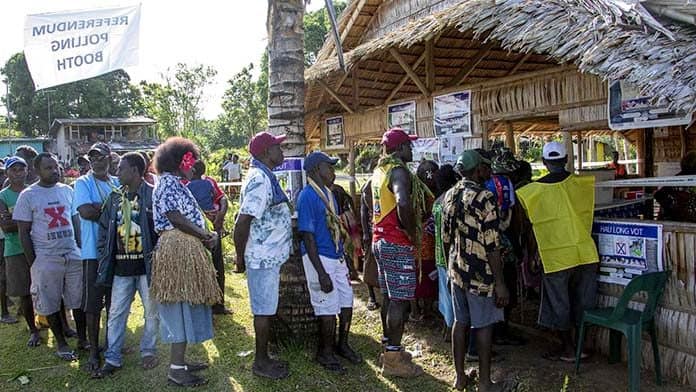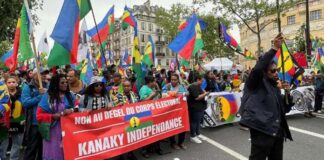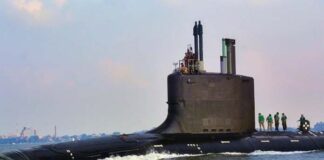The people of Bougainville, a province of Papua New Guinea (PNG), have voted for independence by a huge 98.31 per cent, in their long-awaited referendum held in November.
Prior to the referendum, there were predictions of between 75 per cent and 80 per cent in favour of independence.
The vote is a product of Bougainville’s war of secession from 1988 to 1998. Peace was only agreed on after the mutual exhaustion of both sides—PNG and Bougainville.
The Bougainville Revolutionary Army (BRA) led by Frances Ona of Landowners Association had fought PNG’s militarised riot police and then the Defence Forces to a standstill with home-made weapons and re-conditioned American and Japanese weapons from World War II, that still litter Bougainville.
Australia, PNG’s arms supplier, concluded that a continuing war would only fuel further instability inside PNG.
In March 1997, PNG’s Defence Force had mutinied, when it became public that the PNG Government had paid overseas mercenaries to fight in Bougainville. Ordinary PNGers joined the military in protests against the PNG government.
The Australian government tried to stop Bougainville gaining independence, fuelling and funding the PNG government’s war.
Socialists and solidarity activists in Australia campaigned to back Bougainville’s right to secede.
The peace settlement meant the Panguna gold and copper mine—the epicentre of the rebellion on Bougainville—was left closed. And it ended any talk of re-opening it under the control of its former Australian owner, Rio Tinto, which had enraged locals through the pitiful royalties paid to the landowners.
Today, with the talk of independence, Australian mining companies are again lining up to re-open Panguna, estimated to be worth an incredible $85 billion.
While the mining companies talk of this being a way of financing Bougainville’s independence, the lion’s share of the wealth would go to them, not to the people of Bougainville.
While the 2019 vote is non-binding on the central PNG government, its hold on the copper-rich province is untenable. The future does not bode well if PNG ignores the result of the vote or delays independence any longer.
PNG’s Minister for Bougainville Affairs, Puka Temu, said, “The outcome is a credible one.” He asked Bougainvilleans, “to allow the rest of Papua New Guinea sufficient time to absorb this result”.
PNG Prime Minister James Marape’s office initially said, “he was out of town and was not available for comment”. Hard to believe on the day of such an important vote.
Marape later acknowledged the referendum result but waffled that he would only commit his government to develop, “a road map that leads to a lasting peace settlement”.
Media reports state un-named PNG officials are “concerned” that Bougainvillean independence would set a precedent for secession in other PNG provinces such as East New Britain, New Ireland and Enga.
They should be. PNG is a nation state thrown together by imperialist powers. In 1883 the then colony of Queensland seized Papua. Australia then formally ruled Papua as a colony from 1906 and the whole of PNG from 1914, when it added the northern part of PNG’s main island and those provinces listed above as well as Bougainville from Germany, until 1975.
Bougainville itself was separated from the Solomon Islands, to which its people have close ethnic links, by a treaty negotiated by Britain and Germany in 1899 in The Hague.
Typically, mainstream Australian experts, like the Lowy Institute, declared that Bougainville self-reliance would “at best be years away”.
These “delay, delay” arguments are echoes of the Australian government’s geo-political concerns that have nothing to do with the wishes of Bougainvillean people.
What the Morrison government fears is that Bougainville’s referendum will serve as an inspiration for the West Papuan independence movement in Indonesia and the Kanaky people in New Caledonia, who will vote in another referendum for independence from France in September 2020.
The headache for the Australian government is that a number of small nations would exist which may look to China to finance their independence.
The exclusion of any other major power in the South West Pacific has been the objective of Australia’s rulers for over 140 years. China is just the latest perceived threat.
But the desire of Bougainville for independence must come before any of these outside imperialist interests.
As the late Francis Ona said during the war, “We have been ruled by four colonial masters over the past 100 years: first the Germans, then the Australians, then the Japanese, then the Australians, then PNG. We believe it is time we ruled ourselves now.”
By Tom Orsag






